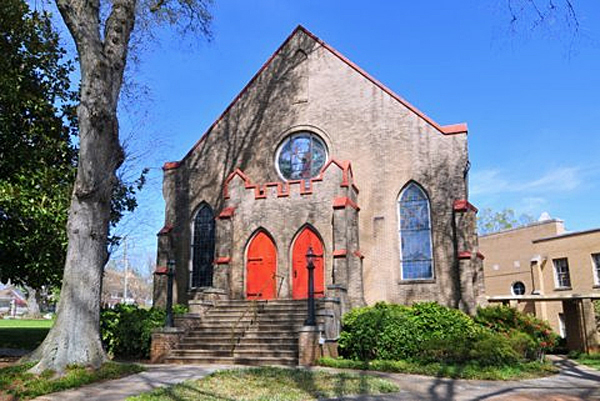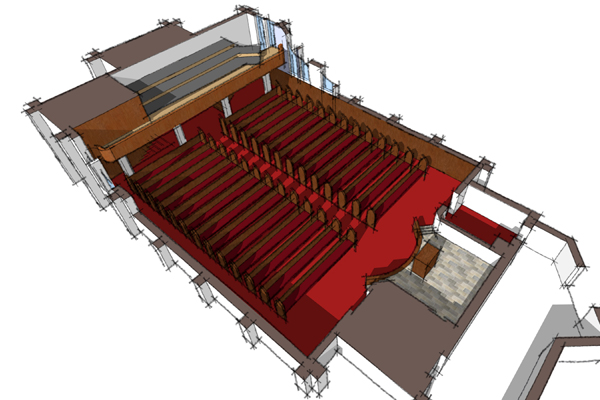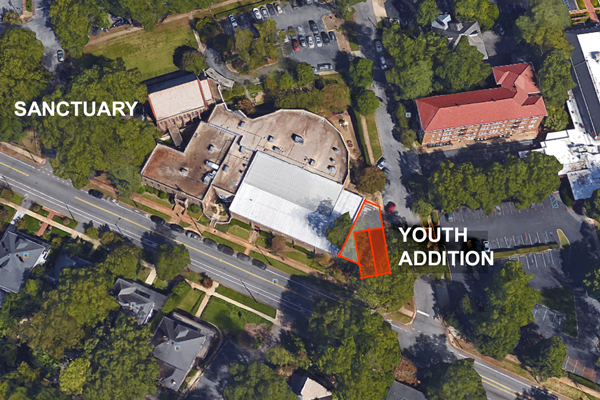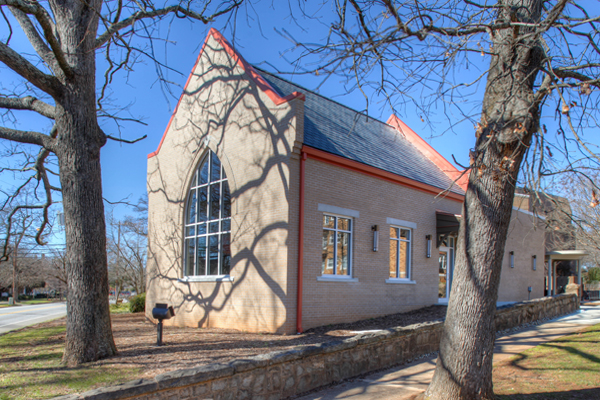BACKGROUND
With a century of ministry in the city of Greenville, Fourth Presbyterian Church was well-established in her Gothic Revival sanctuary, dedicated in 1913. The remainder of the campus had developed in stages, with the pieces connected with varying degrees of success. The Church was committed to remaining on its crowded site in one of the City’s oldest neighborhoods
“Our buildings are part of the legacy of those who preceded us. We have a responsibility to pass that legacy on to those who follow.” Dr. Mike Hoyt, Pastor
GOALS
- Improve access to the chancel and choir
- Renovate the space under the Sanctuary to allow it to better serve as overflow and meeting space
- Provide new space for youth ministry
- Renovate other areas to better accommodate the Church’s ministry to homeless families
STRATEGY
Renovations were addressed on a case-by-case basis, with an emphasis on honoring the Church’s traditions and earlier investments. The largest piece of the project – an 1800 square-foot assembly space – allowed Youth ministry to move from smaller spaces buried inside older buildings to a bold space at a visible corner of the property. A study of costs determined that the addition could be built using heavy timber construction and wood framing for about the same cost as a conventional steel structure.
IMPACT
- Gothic Revival architecture of the new youth space communicates important values and distinguishes the space from other, more predictable and transient settings for youth ministry
- The new construction announces the Church’s presence on a prominent corner.
- Much-needed technical and accessibility upgrades were introduced without “damaging” the Sanctuary’s historic appearance.

The original sanctuary, dedicated in 1912, was the inspiration for renovations and additions completed through the project.

Information shared during the capital campaign included diagrams of the changes that would (and wouldn’t change) be made to some of the Church’s most important spaces.

The Youth addition was shaped and surrounded by a triangle of buildings and busy streets.

